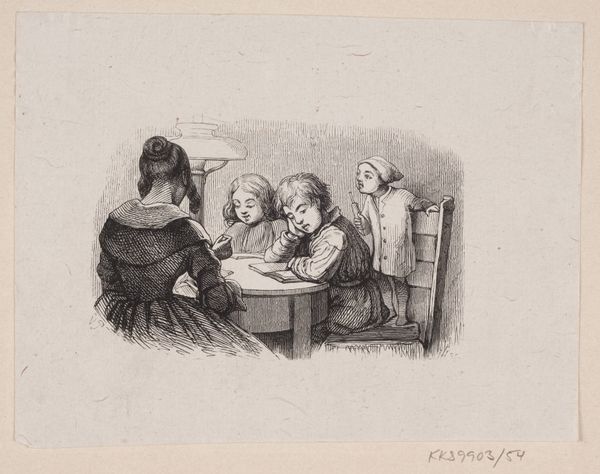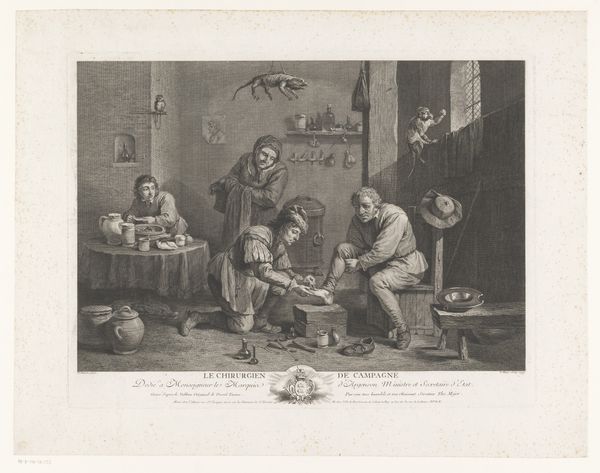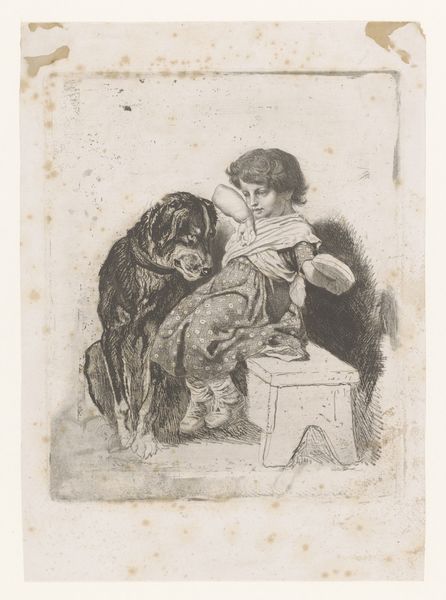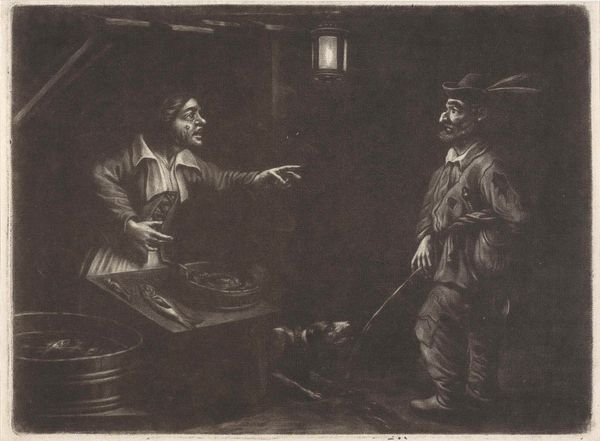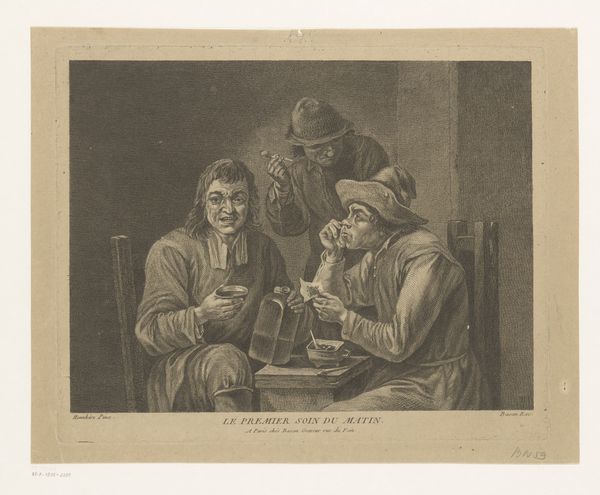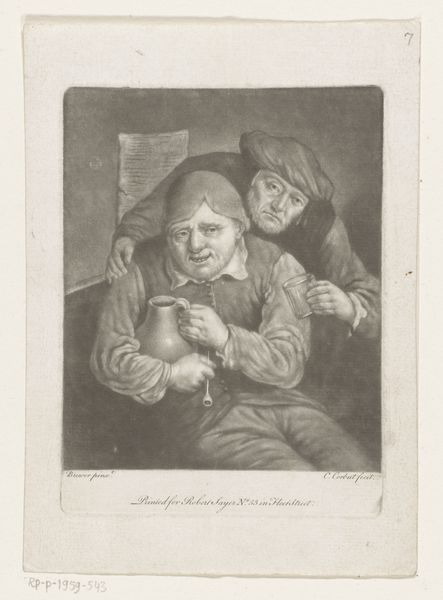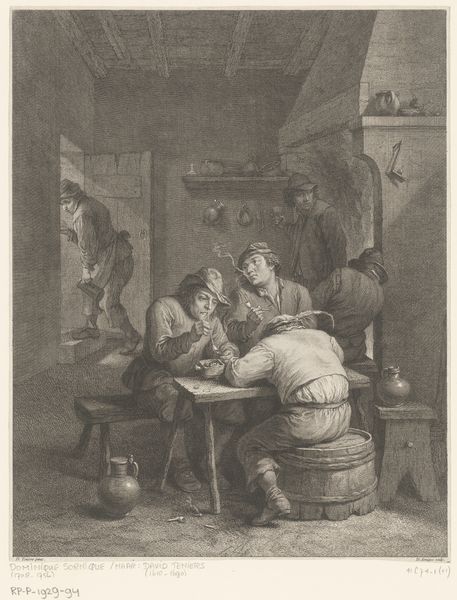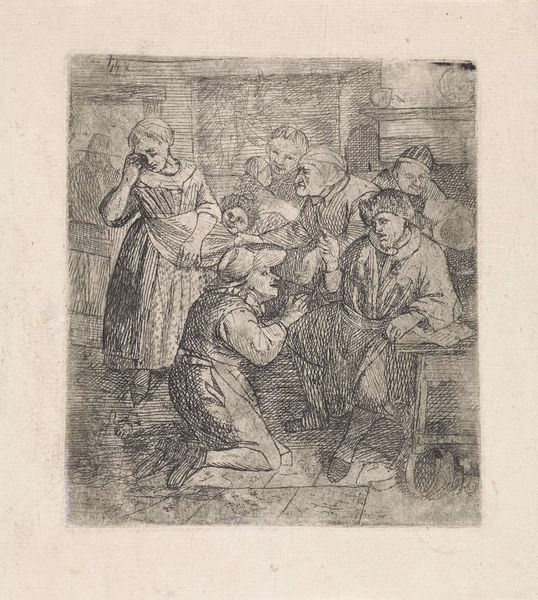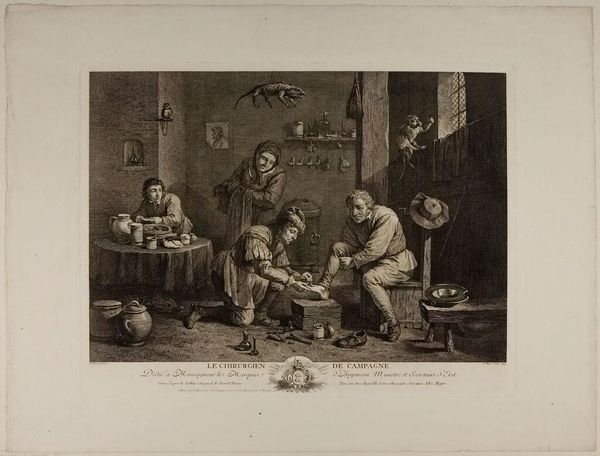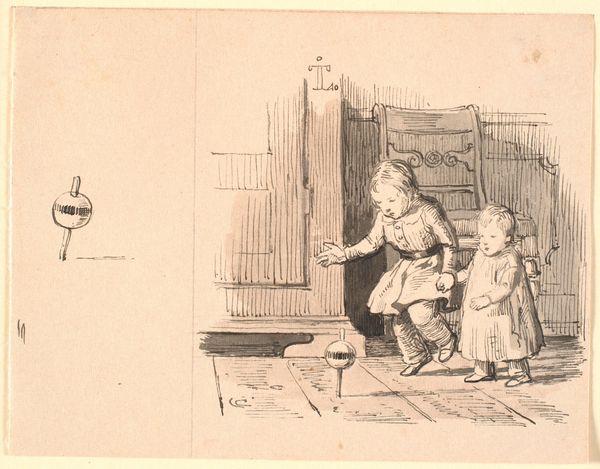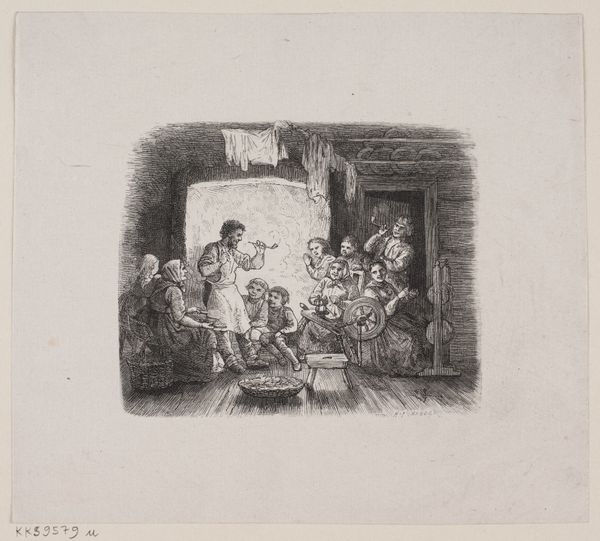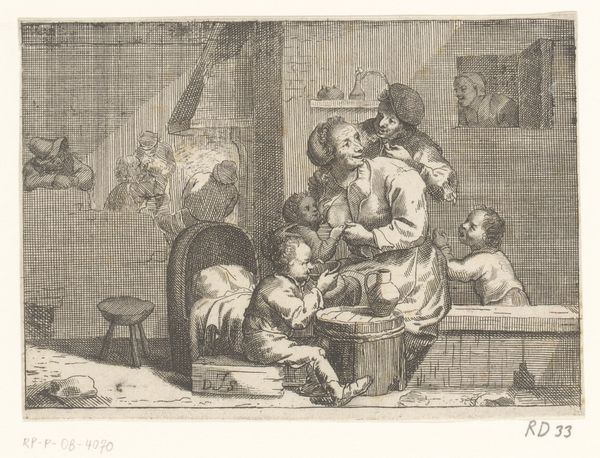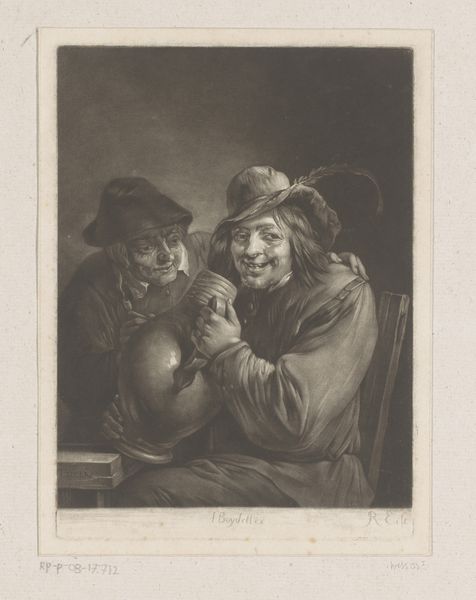
drawing, print, etching, charcoal
#
portrait
#
drawing
# print
#
etching
#
charcoal drawing
#
figuration
#
intimism
#
romanticism
#
genre-painting
#
charcoal
Dimensions: Sheet: 11 3/4 × 15 7/8 in. (29.8 × 40.4 cm)
Copyright: Public Domain
Curator: "Soap Bubbles" by Jean-Jacques de Boissieu, crafted around 1799. It's an etching rendered with charcoal. What are your initial thoughts? Editor: There is an immediate sense of melancholy in this composition. The subdued palette heightens the transient nature of the scene and suggests a commentary on fleeting moments and fragile existence. Curator: Exactly, the Romantic era often delved into ephemerality. Note how the composition leads our eye upwards: from the boy blowing bubbles, to the floating bubble hovering above the hat, drawing focus on form, perspective and balanced asymmetry within the space. Editor: Beyond the technical aspects, consider the etching process itself. Think about the repetitive dipping in acid and layering the drawing for desired depth in gray tones. Here we also have to ask if the materials that create this depth were responsibly sourced, from quality charcoal, to paper type and origin. The texture adds another layer; we aren't simply viewing childhood but how it’s been materially represented, and potentially idealized through print production. Curator: Interesting point on texture and method, which serve the meaning itself! Boissieu skillfully used line and shade to create depth. This in turn underscores how such play has become an almost serious activity with significant meaning. The formal interplay suggests contemplation, contrasting innocence against experience—youth fleeting, much like the bubbles they craft. Editor: I wonder about the function of the bubbles themselves. Soap wasn’t always easily acquired. This activity could represent the aspirations of a bourgeois class finding its feet, who might have been patrons, eager for luxury items they once never knew. Consider the parrot also present within the image as an item indicative of leisure, which also suggests international trade dynamics in exotic commodities, which likely relied on underpaid labor to ensure supply met demand. Curator: Such context definitely broadens appreciation. By visually analyzing Boissieu's construction, one also sees these layers of interplay on a sociopolitical level, adding more meaning into a fleeting gesture and activity. Editor: Precisely. It’s this confluence—the method, material reality and our readings into what we think this symbolizes within larger market forces that makes this more complex than what it might originally convey at first glance.
Comments
No comments
Be the first to comment and join the conversation on the ultimate creative platform.

